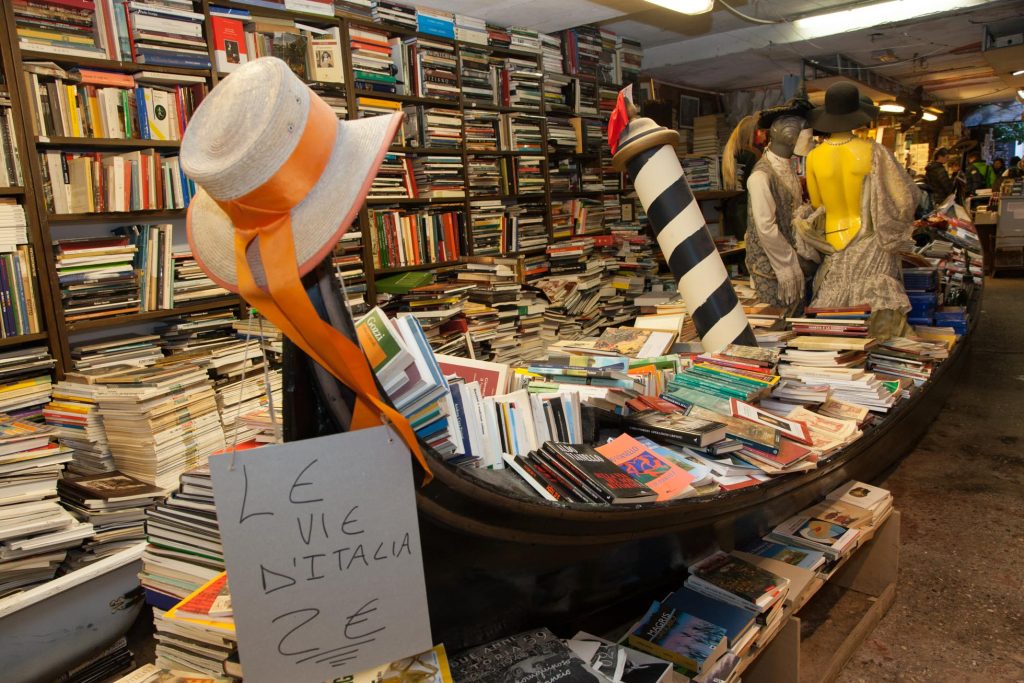Although the printing press was born in Germany of the hand of Gutenberg, the printing press, Aldo Manucio was the one who pushed for the editing and printing of works in Greek and Latin from Venice to the rest of Europe. In the FIFTEENTH century, the city had over a hundred booksellers, and the book will become for the first time on an object of individual use.

There are many things that we know of Venice: canals, bridges, carnival, film festival... however, few people know that the water town was also the city of the book. We can say that the book, as an object for use by individuals, born in Venice, the travellers who pass through here, you will realize that this city has a huge number of libraries that is too much for your size. And the head of the linking Venice with the books, is the humanist and printer Aldo Manucio, born in Bassiano in 1449.
As we already know, the printing press was invented in 1450 by the hand of the German Johannes Gutenberg, but it will be Manucio who develop and export this invention by Europe. Manucio received a huge amount of preparation both in Latin and Greek, being passionate about the classics of Greek literature, one of his main ambitions is that these works do not appear in the forgotten or lost physically. Thanks to the patronage of prince Albert Pius, Manucio was able to open a print shop in the Italian town of Carpi, but due to the commercial strength and economic offered by the nearby Republic of Venice, he decided to move to this city in 1490, there established his workshop and printing editing ancient Greek plays, and selling them later to the inhabitants of venice. Up to this time, books were used as reference material in libraries and universities, but were not accessible to the common people, and much less was normalized sale. To Manucio you must, for example, the first edition of several works of Aristotle, Plato, Euripides, or Plutarch. Another of the contributions of the "imprenta aldina," the name by which he baptized his workshop, was the creation in 1501 a new type font, known as the typeface italic, currently known as italic. The death of Manucio in 1515, his son paul took over the workshop, continuing the work of printing and reproduction of classic greco-latino, allowing the expansion of the book as a everyday object and the increase of the cultural level of the venetians.
Other printers took the example of Manucio, and they began to proliferate printing workshop in Venice, but above all the city was full of libraries, making the books into a new product, appreciated by the merchants, that will, in part, the commercial crisis which suffered Venice in the SIXTEENTH Century because of the new trade routes imposed by Spain and Portugal in the americas. This predilection for the libraries can be seen in the present, still today, Venice retained a multitude of libraries spread across its six districts. The most ancient of all is the Emiliana Antiquarium, open in the NINETEENTH Century, it retains a huge selection of prints venetians from the FIFTEENTH Century to the CENTURY; the library Bertoni, right in the centre of the city, is dedicated for decades to the sale of books went out of print and copies are rare; librería Studium, next to the Bridge of Sighs, is specialized in books related to religious studies; we can say that The Toletta is the biggest bookstore in Venice, and also has the highest variety of topics, is one of the few places in the city where we can find Spanish literature; it's worth taking a stroll through the library of Marco Polo or the Sullaluna, but without a doubt, the largest library which has Venice, and also the most beautiful, the Aqua Alta, a gondola at actual size in the center of the local exhibits an important collection of second-hand books, the greater part of the books are available in small boats or bathtubs, features a courtyard that features a staircase built with books, offering magnificent views of the channel and with the other gondola moored to one of the outputs, where you can enjoy a few minutes of reading, provided that the influx of tourists permit. The decadence of libreria Aqua Alta transports us back, as if it were a time machine, to the Venice of the SIXTEENTH Century, a city that, to the point of losing its economic hegemony and trade in favor of the Spanish Empire, puts all his spirit is aspects merely cultural.
The Correr Museum, located in the interior of St. Mark's Square, saves inside some of the machines in printing which used Manucio and his disciples, and in the same plaza we also find the Museum Olivetti, a space dedicated to the exhibition of all kinds of typewriters, leaving a record of Venice, despite the passage of centuries, it is still the city of the book.